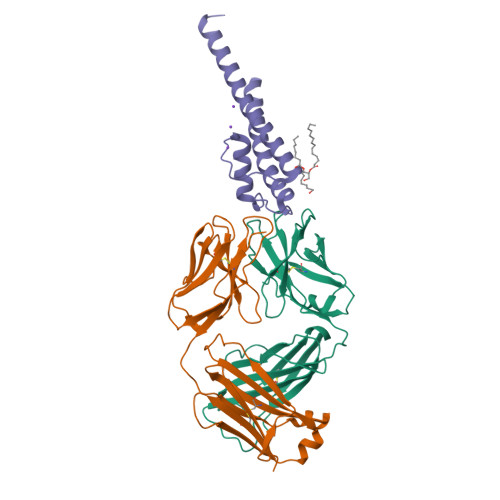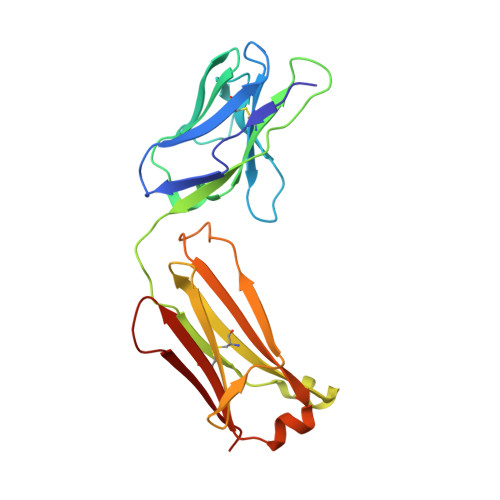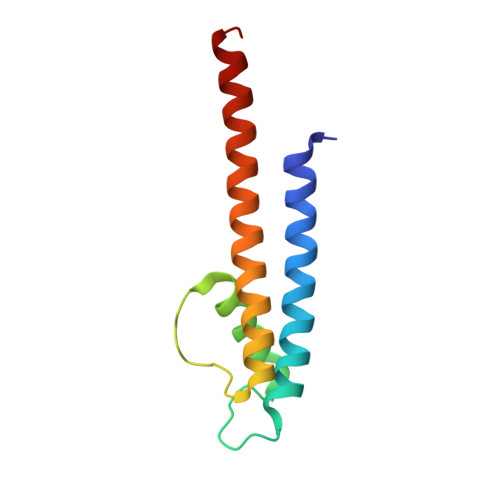Inverted allosteric coupling between activation and inactivation gates in K+channels.
Labro, A.J., Cortes, D.M., Tilegenova, C., Cuello, L.G.(2018) Proc Natl Acad Sci U S A 115: 5426-5431
- PubMed: 29735651
- DOI: https://doi.org/10.1073/pnas.1800559115
- Primary Citation of Related Structures:
6BY2, 6BY3 - PubMed Abstract:
The selectivity filter and the activation gate in potassium channels are functionally and structurally coupled. An allosteric coupling underlies C-type inactivation coupled to activation gating in this ion-channel family (i.e., opening of the activation gate triggers the collapse of the channel's selectivity filter). We have identified the second Threonine residue within the TTVGYGD signature sequence of K + channels as a crucial residue for this allosteric communication. A Threonine to Alanine substitution at this position was studied in three representative members of the K + -channel family. Interestingly, all of the mutant channels exhibited lack of C-type inactivation gating and an inversion of their allosteric coupling (i.e., closing of the activation gate collapses the channel's selectivity filter). A state-dependent crystallographic study of KcsA-T75A proves that, on activation, the selectivity filter transitions from a nonconductive and deep C-type inactivated conformation to a conductive one. Finally, we provide a crystallographic demonstration that closed-state inactivation can be achieved by the structural collapse of the channel's selectivity filter.
Organizational Affiliation:
Laboratory for Molecular, Cellular and Network Excitability, University of Antwerp, 2610 Antwerp, Belgium.





















